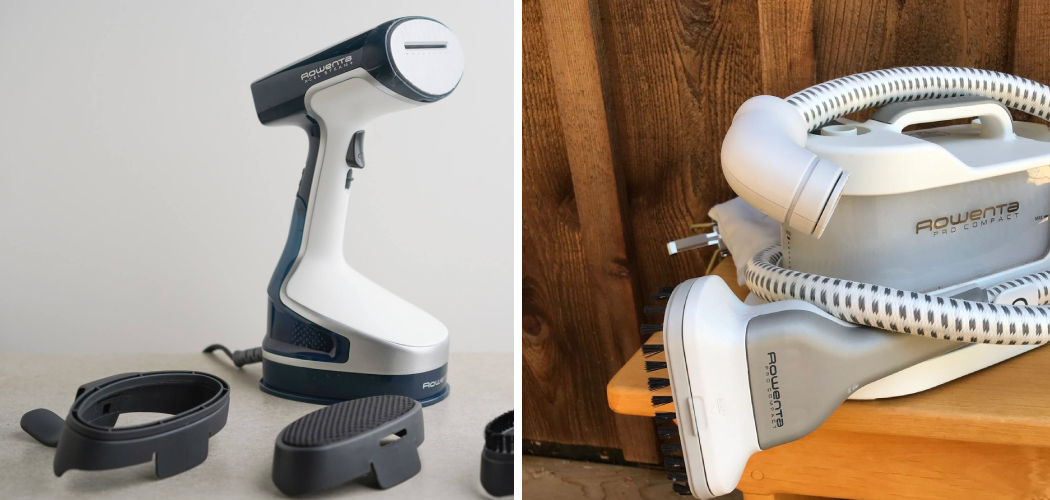Do you ever feel that your clothes are not as clean and crisp as they used to be? Are you tired of the same old washing machine routine? Well, it’s time for an upgrade! Investing in a Rowenta steamer can boost your wardrobe – it’ll get rid of dirt, odors, and wrinkles while saving you time.
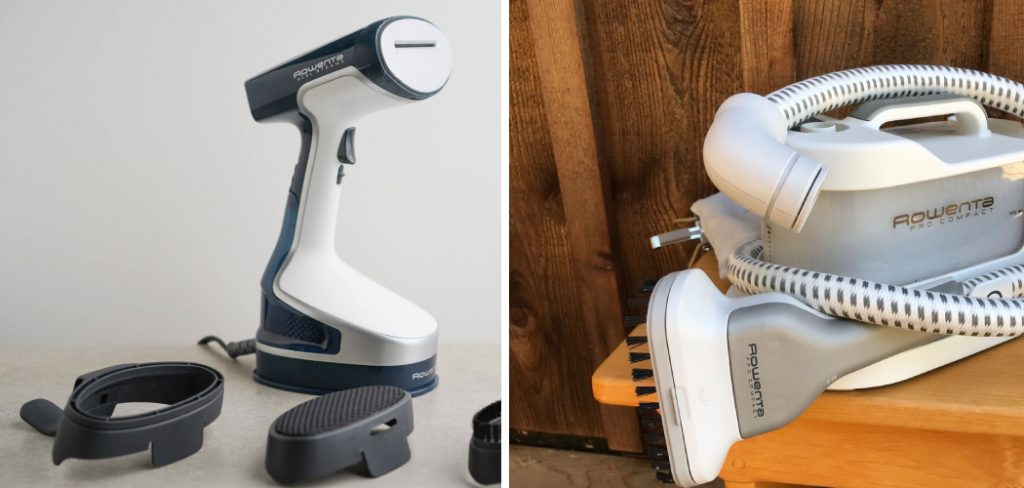
Rowenta steamer is a powerful and versatile tool that can be used on different fabric types. It’s perfect for everyday use, special occasions, or even travel. But like any other household appliance, it requires regular cleaning to maintain its performance and prolong its lifespan.
In this blog post, we will cover everything there is to know about how to clean rowenta steamer so that you can steam away like a professional!
What Will You Need?
To clean your Rowenta steamer, you will need:
- White vinegar
- Distilled water
- Soft cloth or sponge
- Diluted dish soap
Once you have these items, you’re ready to get started!
10 Easy Steps on How to Clean Rowenta Steamer
Step 1: Empty the Water Tank
Always make sure that your Rowenta steamer is unplugged before cleaning. Start by removing any leftover water from the tank and discard it. If the steamer was recently used, allow it to cool down before proceeding.
Step 2: Prepare the Cleaning Solution
Mix a solution of equal parts white vinegar and distilled water. This mild acid solution is perfect for descaling and removing mineral deposits that can build up in your Rowenta steamer. Pour the solution into the water tank to the maximum fill line, ensuring the solution is well mixed.
Step 3: Let the Solution Sit
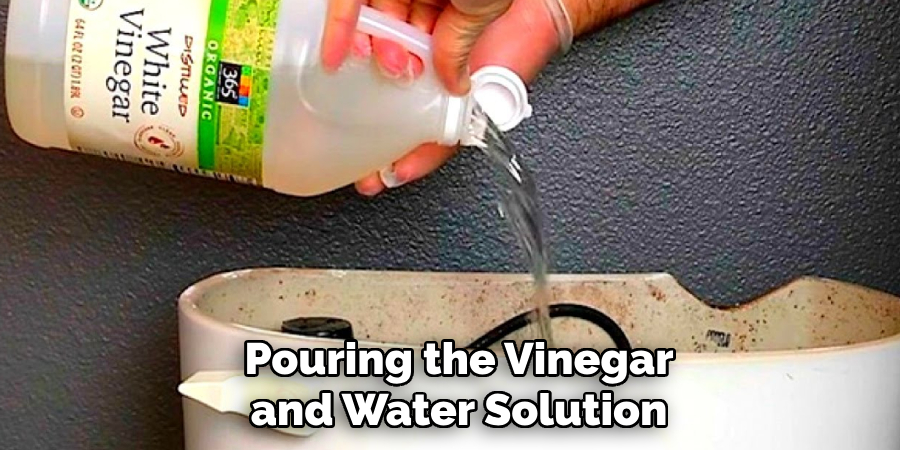
After pouring the vinegar and water solution into the tank, let it sit for approximately 30 minutes to an hour. This allows ample time for the solution to effectively break down any mineral deposits or grime that may be present within the steamer. Do not turn on the steamer during this time.
Step 4: Turn On the Steamer
After the vinegar solution has had time to sit, plug in and turn on the Rowenta steamer. Allow it to heat up and start producing steam. This process helps further to break down any remaining deposits within the steamer. Make sure to perform this step in a well-ventilated area or outside to avoid inhaling the vinegar vapors. Allow the steam to run until the tank is almost empty, but ensure to leave a small amount of the solution in the tank.
Step 5: Cool and Rinse
Unplug the steamer once the tank is almost empty and let it cool down. After it has sufficiently cooled, remove the remaining solution from the tank. Thoroughly rinse the tank several times with clean distilled water to ensure all vinegar solution is completely removed. Be careful to avoid getting water into the electrical components of the steamer during this process.
Step 6: Clean the Exterior and Nozzle
Once you have thoroughly rinsed the interior, it’s time to move on to the exterior. Dampen a soft cloth or sponge with warm water and dish soap. Wipe the exterior of the steamer, focusing especially on areas that come into contact with fabric or your hands. Use a soft brush or cloth to gently remove any residue or build-up for the steamer nozzle.
Avoid harsh chemicals or abrasive tools that could damage the steamer’s surface. Then, rinse the soap off the steamer with a cloth dampened with clean water and dry it thoroughly.
Step 7: Dry the Steamer
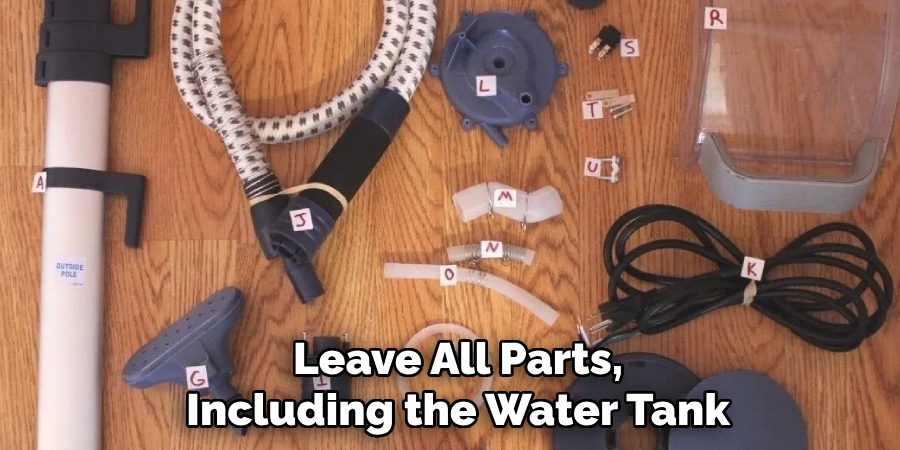
After thoroughly cleaning and rinsing your Rowenta steamer, it’s crucial to let it dry completely. Leave all parts, including the water tank, open to air dry. This will prevent the growth of mildew or mold that can occur in damp environments.
You may also use a dry cloth to wipe down the exterior and speed up the drying process. Ensure the steamer is completely dry before your next use.
Step 8: Regular Maintenance
To keep your Rowenta steamer in the best possible condition, it’s advisable to undertake regular maintenance. After every few uses, repeat the cleaning steps described above. This will ensure any mineral deposits or residues are consistently removed, allowing the steamer to function optimally. Avoid tap water in your steamer; instead, opt for distilled or demineralized water to prevent mineral build-up.
Step 9: Store Appropriately
After cleaning and drying the Rowenta steamer completely, store it in a cool, dry place. Avoid places with high moisture, as it can promote the growth of mold and mildew. Also, make sure to empty the water tank before storing the steamer. This helps in preventing the build-up of unnecessary residue or mold. Proper storage ensures the longevity and effective performance of your Rowenta steamer.
Step 10: Test the Rowenta Steamer
After cleaning and allowing the steamer to dry thoroughly, it’s time to test it. Start by filling the water tank with distilled or demineralized water. Plug in the steamer and turn it on. Allow the steamer to heat up and start producing steam.
This ensures the steamer is in good working condition after cleaning and ready for your next use. If the steamer is not working as expected, refer to the user’s manual or contact Rowenta customer service for further assistance.
By following these simple steps, you can keep your Rowenta steamer clean and in excellent working condition. Regular cleaning is essential to maintain the performance of any household appliance and ensure its longevity.
5 Additional Tips and Tricks
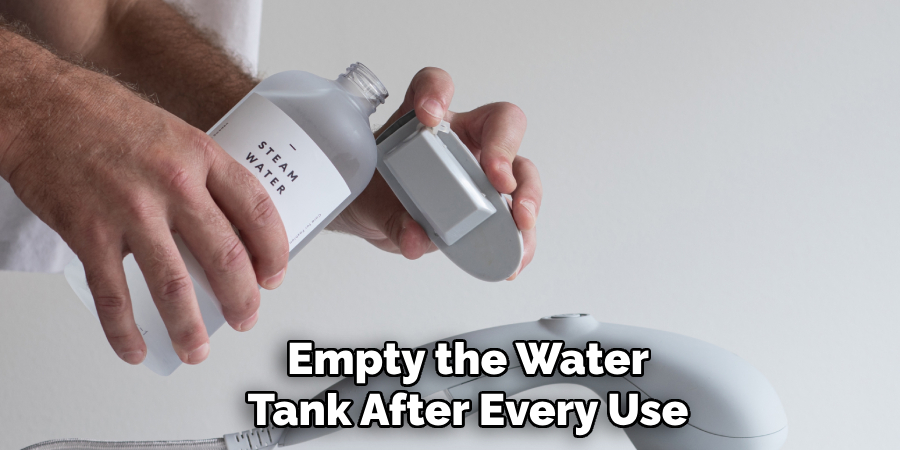
- Empty After Every Use: To extend your Rowenta Steamer’s lifespan, empty the water tank after every use. This prevents mineral buildup from the water.
- Use Distilled Water: If possible, use distilled water instead of tap water. Distilled water is free of minerals that could build up in your steamer and cause it to function less efficiently.
- Regular Cleaning: Schedule regular cleanings depending on how often you use the steamer. Weekly or bi-weekly cleaning helps maintain the performance of your steamer.
- Dry After Cleaning: After cleaning your Rowenta Steamer, ensure it is completely dry before storing it. This helps prevent mildew and other moisture-related complications.
- Handle with Care: Your Rowenta Steamer is a delicate device. Handle it with care during use and cleaning to avoid damage to its parts.
With these additional tips and tricks, you can ensure that your Rowenta Steamer stays in top condition for longer.
5 Things You Should Avoid
- Avoid Harsh Chemicals: Don’t use abrasive cleaners or tools that could potentially damage your Rowenta Steamer. Instead, opt for gentle, non-abrasive solutions and soft cloths for cleaning.
- Don’t Overfill: Overfilling the water tank can lead to water leakage and inefficient steam production. Always adhere to the maximum fill line.
- Avoid Letting Water Sit: Don’t let water sit in the steamer when not in use. This can lead to mineral deposits and the growth of bacteria or mold.
- Never Immerse in Water: Your Rowenta Steamer is not designed to be fully submerged in water for cleaning. Always follow the manufacturer’s cleaning instructions to avoid damaging the device.
- Don’t Ignore Regular Maintenance: Regular maintenance is critical for the longevity of your steamer. Neglecting this can result in decreased performance over time and early device failure.
By avoiding these common pitfalls, you can ensure your Rowenta Steamer continues to function optimally for years.
Why Do Steam Irons Get Dirty?
Steam irons, like the Rowenta Steamer, use water to produce steam and remove wrinkles from clothing. While this process is effective in smoothing out wrinkles, it can also lead to the build-up of mineral deposits and other impurities from the water. These deposits can clog the steam vents and affect the performance of your steamer over time.
In addition, using tap water in your steamer can introduce additional minerals and chemicals that can further contribute to the build-up of deposits. This is why it is important to regularly clean your Rowenta Steamer to maintain its efficiency and prevent damage.
Overall, understanding how steam irons get dirty can help you take the necessary steps to keep your Rowenta Steamer in excellent condition for longer. With proper care and maintenance, your steamer can continue effectively removing wrinkles and providing you with crisp, wrinkle-free clothing.
Why is My Rowenta Steamer Not Releasing on Steam?
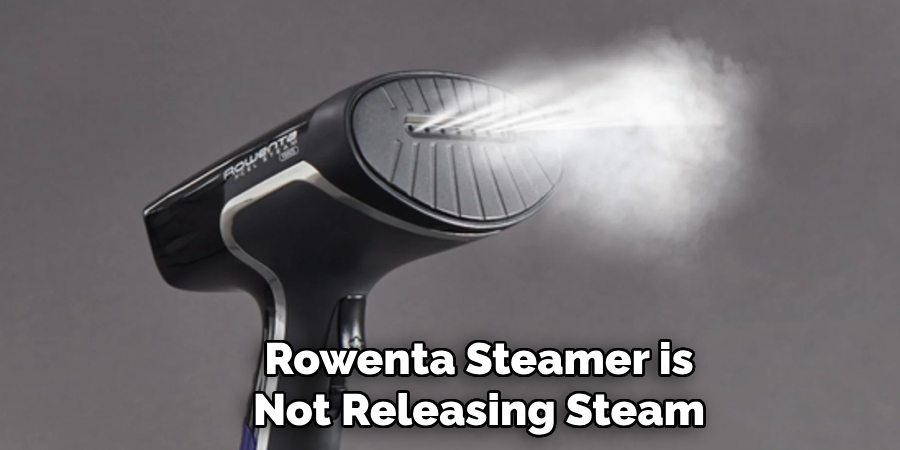
If your Rowenta Steamer is not releasing steam, there are a few possible reasons:
- Insufficient Water: Make sure the water tank is filled to the appropriate level. If it’s too low, the steamer may not produce steam.
- Mineral Buildup: Mineral deposits from hard water can clog the steam vents and prevent proper steam release. Regular cleaning can help prevent this issue.
- Leakage: If water leaks from your steamer, it may not be able to produce steam properly. Check for any cracks or damage in the device and make necessary repairs.
- Damaged Parts: Internal parts of the steamer may become damaged over time, resulting in issues with steam production. Getting the device serviced or replaced may be best.
If none of these solutions work, consult the manufacturer’s instructions or contact customer service for further assistance.
Conclusion
By following the tips outlined in this blog post, you now know how to clean rowenta steamer. This process will ensure that your steamer is working at its full potential and will last for years.
Additionally, regularly cleaning your steamer will give you peace of mind that you are safeguarding against bacteria and other contaminants that could build up otherwise. So take the guesswork out of maintaining your Rowenta Steamer – do regular cleanup and maintenance to reduce any long-term damage and extend the life of this important appliance.
With a little extra effort and the valuable information from this blog post, you can clean your Rowenta steamer quickly and easily, ensuring it runs well for years to come.
